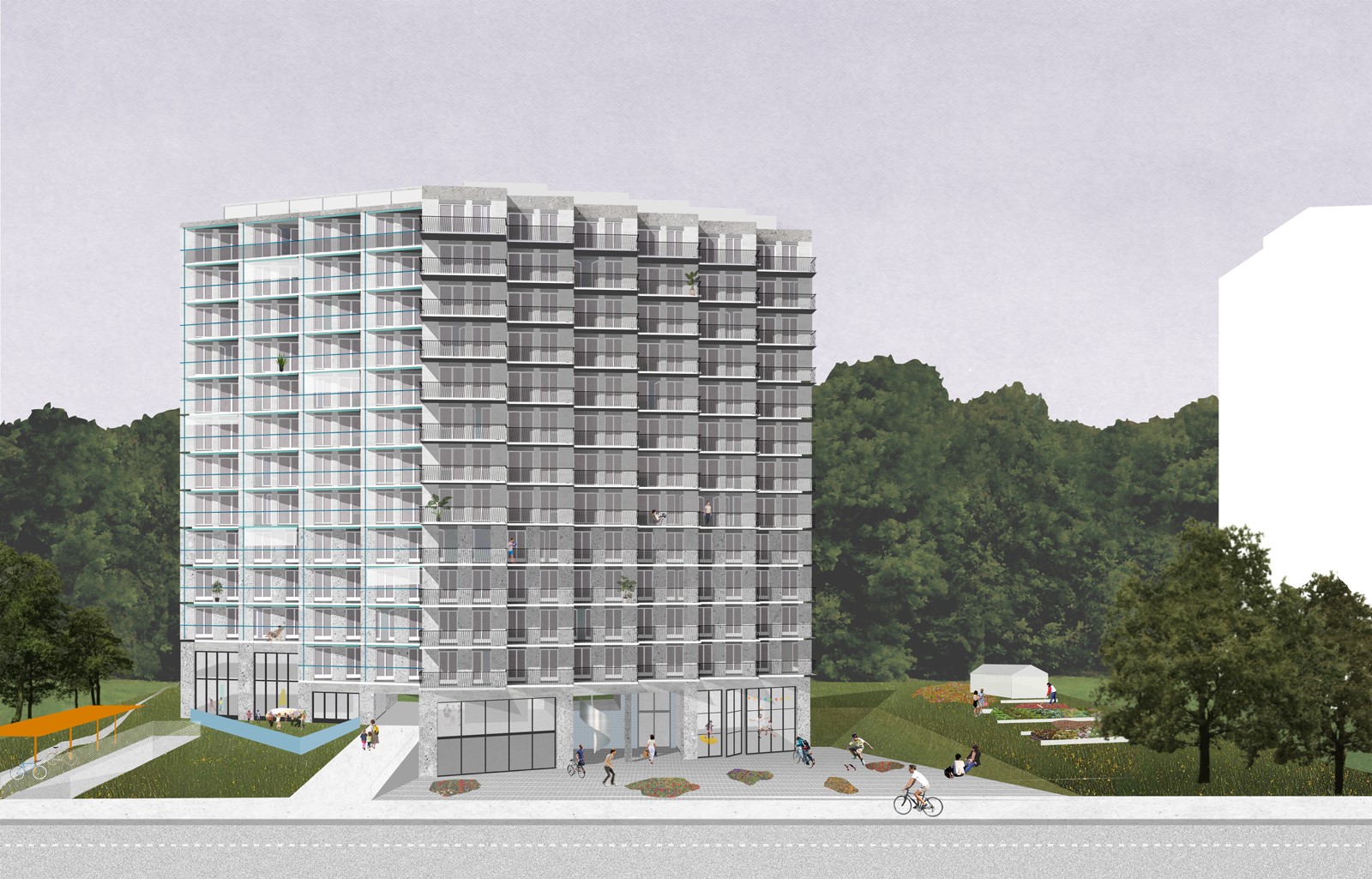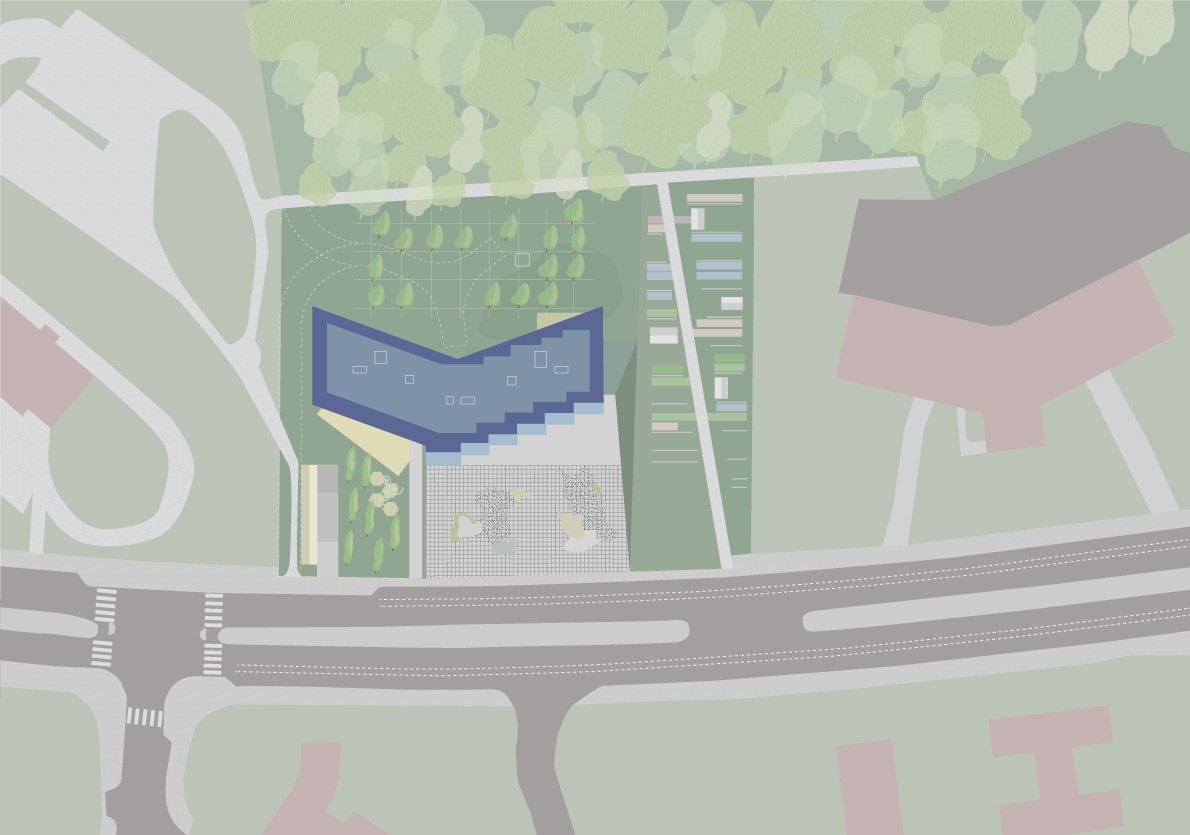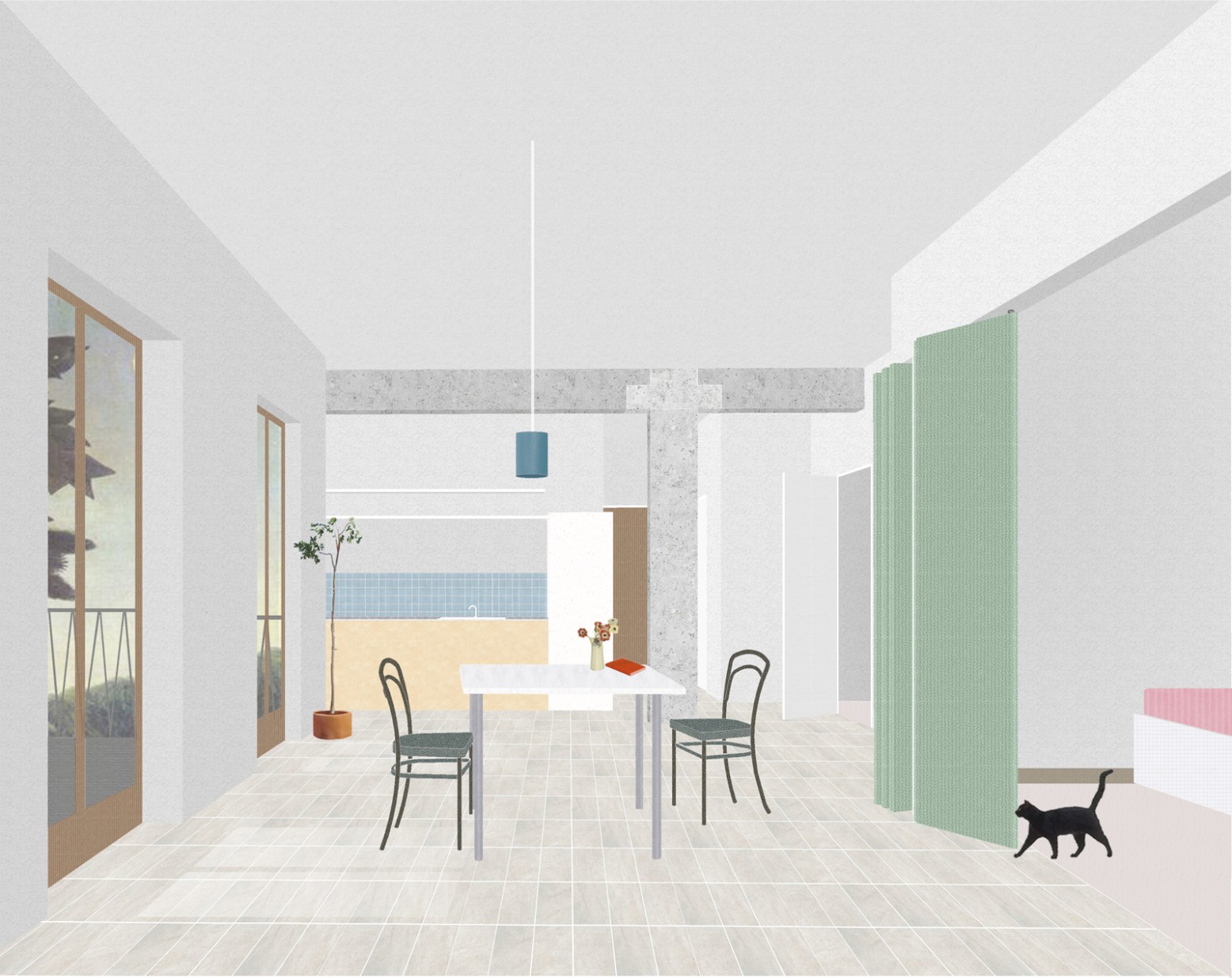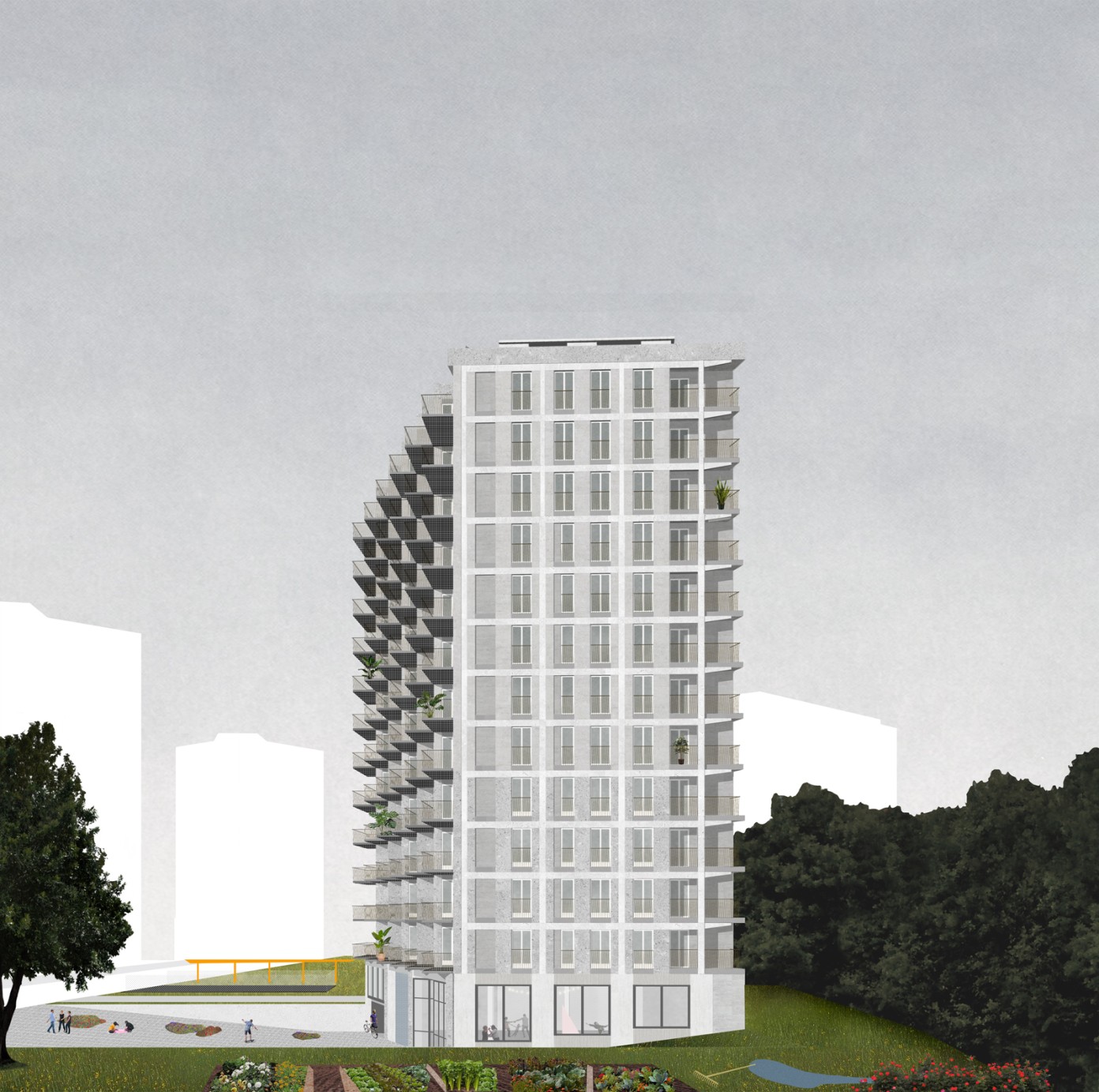

How do you design a housing building in 2020, based on a subdivision permit from 1973? How, then, can you avoid the trap of a dated typology, which has shown its limitations over the fifty years since its inception? This is precisely the challenge posed by the competition. The task is monumental.
We must work in a neighborhood that reflects urban problems stemming from this master plan. While it boasts abundant open spaces, these are undefined and seem ill-suited for fostering social interaction. On the contrary, cars dominate the area’s usage. The surrounding buildings are overly massive, lacking mixed functions, and it seems inappropriate to replicate this model. Nonetheless, the required density forces us to build within the entire available envelope. Fortunately, the programmatic mix outlined in the competition presents an opportunity to foster connections among residents, and between the project and the wider neighborhood, by uniting multiple generations within a single development.
Our intuition led us to consider an approach that takes advantage of the landscape's inherent flexibility, particularly its variations in level. This resulted in the creation of a sloped esplanade, extending the public space to the building's base. Through a large porch, it connects to a bike room and a sports hall, benefiting from a double-height space. The room’s sporting functions are enriched by this height, and the new spatial scale opens up opportunities for a variety of alternative uses.
The surrounding landscape is divided into clearly defined zones, each accommodating different activities: a playground, a nursery, and a productive garden for the residents. These community-oriented spaces facilitate delicate transitions between the park and the street, injecting a sense of urbanity into the project. The two building entrances are naturally distinguished by their differing levels and scales, which helps to create clear, identifiable addresses.
At the back of the building, we have chosen to preserve as much of the undergrowth as possible, drawing inspiration from the nearby Albert I Park. We view the project as a real opportunity to engage with this local heritage.
The first four levels of the building accommodate large, through-apartments, accessed via corridors that open to the rich natural surroundings to the north. As the tree tops are crossed, the layout shifts. On the upper levels, the apartments become mono-oriented and are accessed from a central corridor designed as a sequence of rooms. The presence of two terraces per apartment creates a rhythmic quality to the facade, reducing its sense of monotonous length.
Inside the apartments, the spaces are designed to feel open and fluid, almost as extensions of one another. Rooms flow naturally, subtly defined by beams and columns. In one instance, an overhead beam separates the kitchen from the living room, while a night hall expands into the living space to cater to family life. Here, a bedroom transforms into an office, separated from the rest by a removable wall to accommodate different needs.
This proposal envisions a high-density building with a simple, clear structure. It is quick to build and its design makes it highly adaptable over time. The circulation spaces are conceived as places for interaction, providing generous connections to the public space. The ground-floor communal spaces play a key role in mediating with the city, benefiting not only the residents but the entire neighborhood. Finally, the choice of an open-plan layout contributes to sustainability and moves away from conventional housing models, often lacking in variety. It offers residents a multitude of ways to live, fostering a closer relationship with the surrounding landscape.
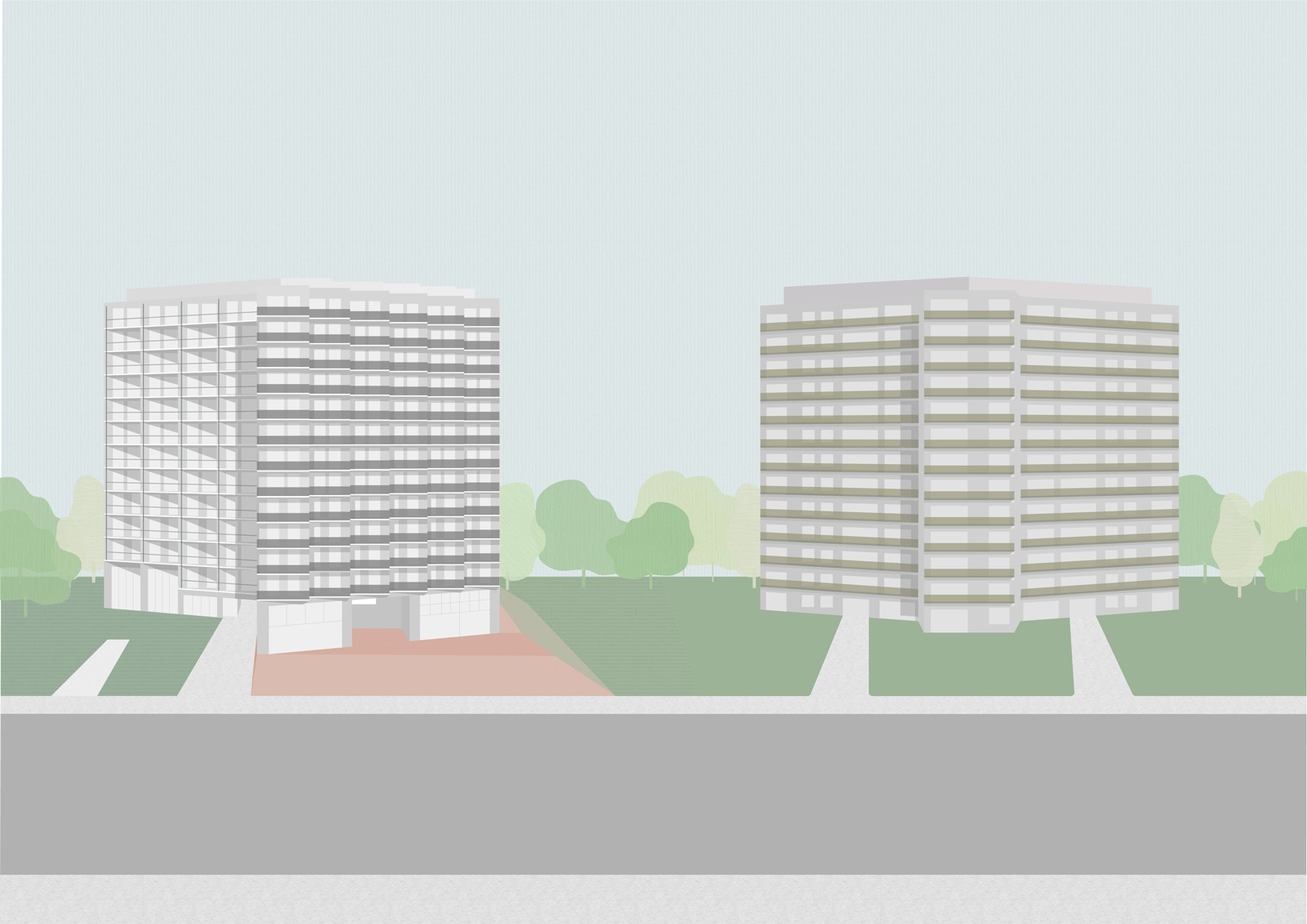
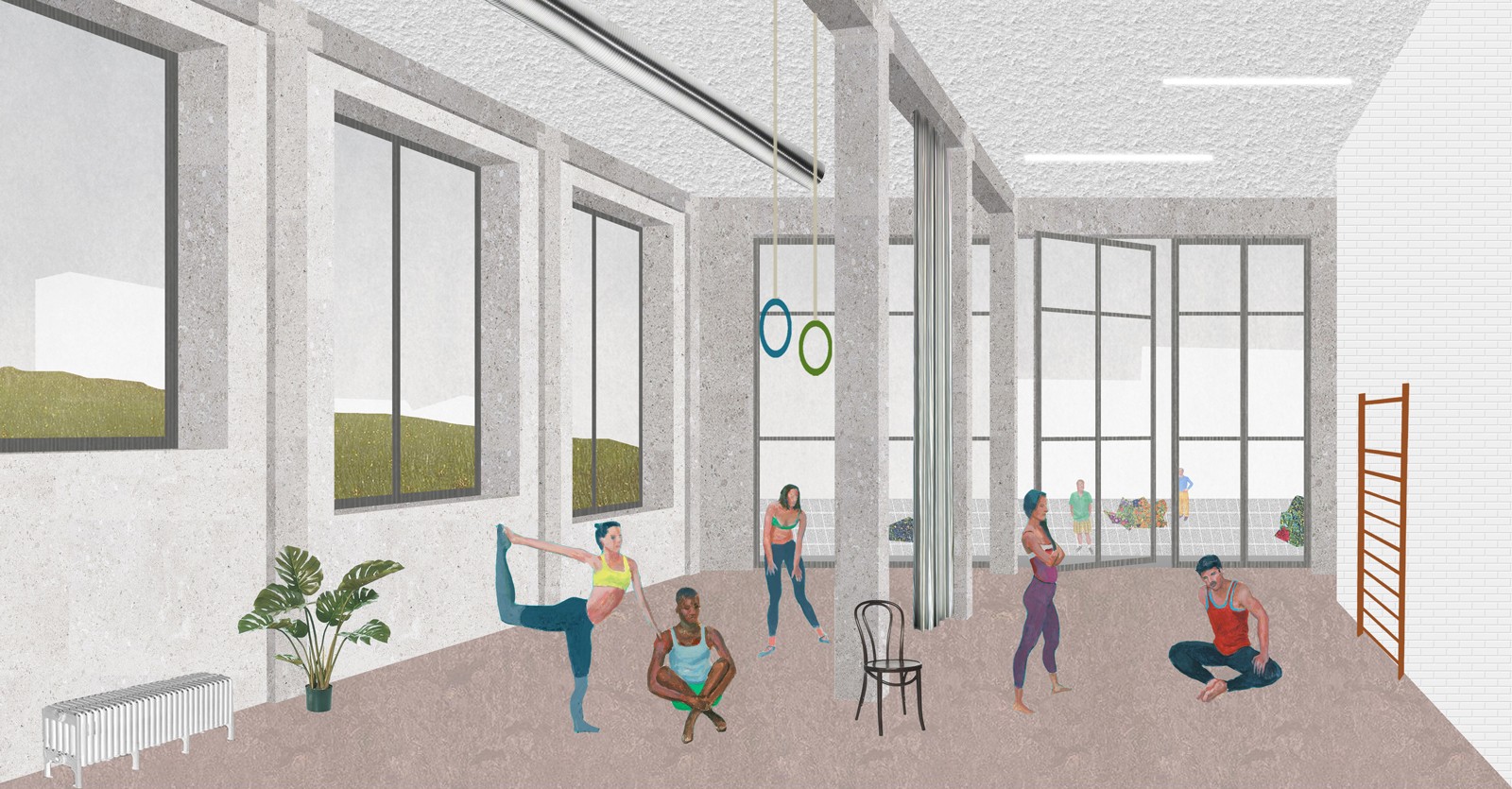
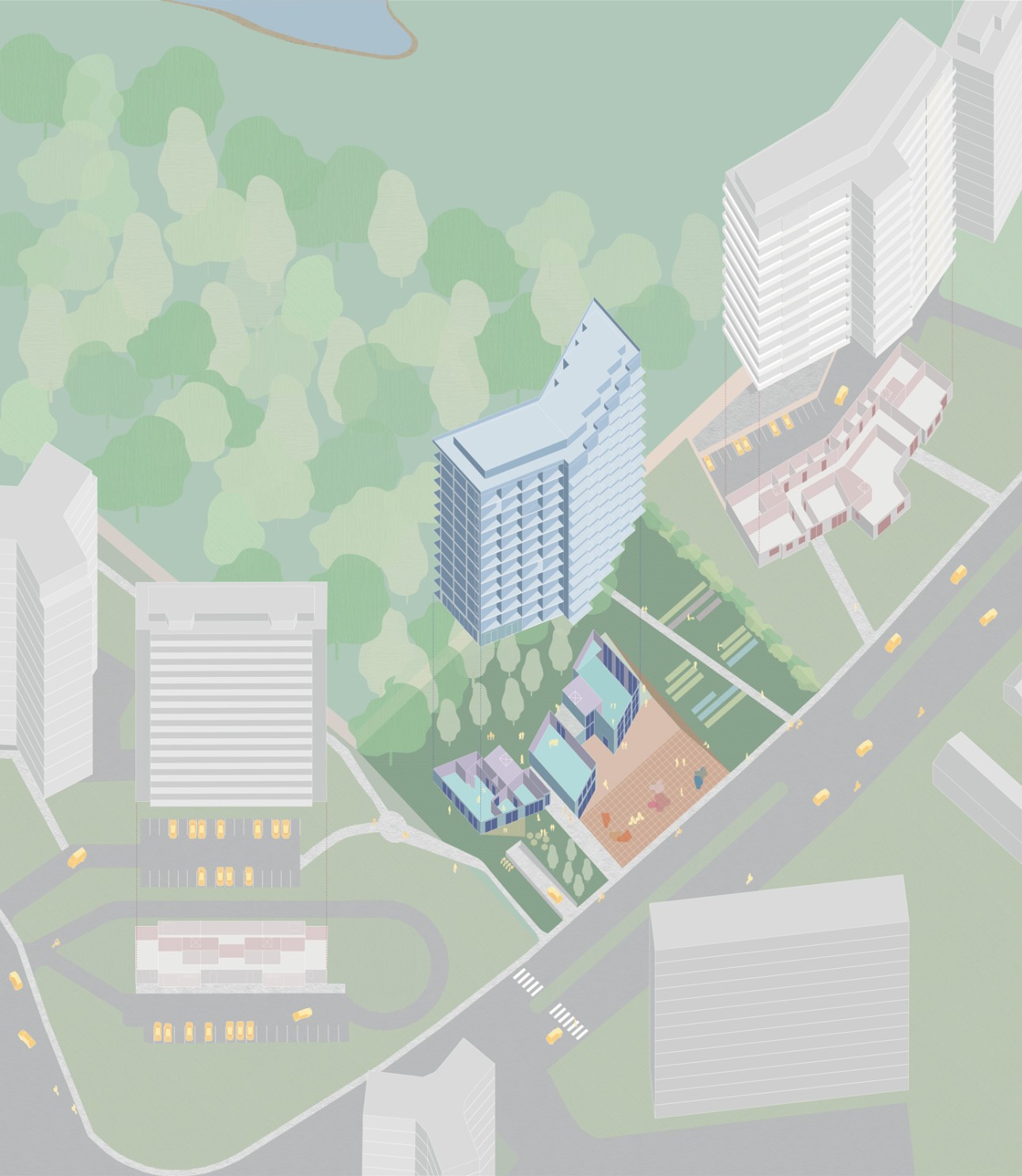
Renovation
Housing
97 housing units, (20% social), nursery, community space & sports equipment
Avenue Van Overbeke – 1083 Ganshoren
2020
Competition
15 575 m²
